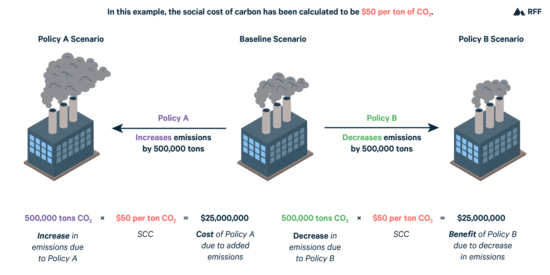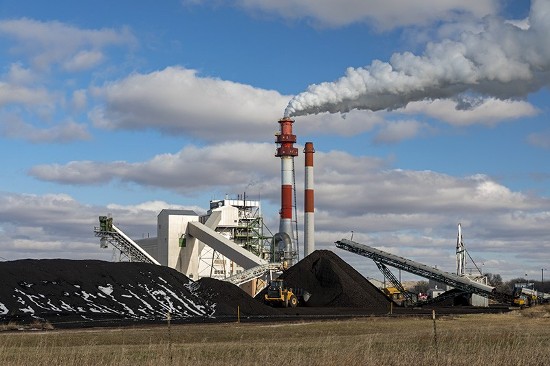According to a multi-year peer-reviewed study published in the journal Nature, entitled “Comprehensive Evidence Implies a Higher Social Cost of CO2,” every ton of CO2 added to our atmosphere costs us $185 USD.
How does that compare to where carbon is priced today by different governments?
- Canada’s current federal price on carbon is $50 CDN (about $38.25 USD). It will go up in annual increments until 2030 when it will reach $170 CDN ($132 USD).
- European Union (EU) carbon pricing in this last month reached 99.22 euros ($99.73 USD) as coal-fired power plants were put back on stream because Russia reduced its natural gas shipments to the continent.
- Sweden which introduced carbon pricing in 1991 and is not part of the EU has seen the price per ton rise to 1,200 Kronors ($118.35 USD).
- Under California’s Carbon Credit Market the calculated cost of a ton of carbon is currently $30.53.
- The current U.S. federal government estimated cost for carbon is $51 per ton, a number first established by the Obama administration and adjusted for inflation.
It’s pretty clear that governments everywhere are underestimating the societal cost of adding CO2 by the ton into our atmosphere if this study a true reflection.
Who did the study?
It comes from researchers at University of California Berkeley’s Resources for the Future (RFF) initiative. The lead researchers are David Anthoff, Associate Professor, and Kevin Rennert, RFF Fellow. They gathered data from across the U.S. to develop a metric to measure the economic damage from climate change in dollars.
States RFF President and CEO, Richard G. Newell, a co-author of the paper, “Our estimate, which draws on recent advances in the scientific and economic literature, shows that we are vastly underestimating the harm of each additional ton of carbon dioxide that we release into the atmosphere. The implication is that the benefits of government policies and other actions that reduce global warming pollution are greater than has been assumed.”
How do you measure the social cost of carbon?
The social cost of carbon (SCC) is an economic measure based on estimates in dollars of the damage caused by emitting additional CO2 or equivalent greenhouse gasses into the atmosphere.
One can do a benefit-cost analysis on policies created to limit air pollution by looking at the implications for public health, and infrastructure. Think of hospitalizations from excessive heat, or from extreme weather events, or from the need to air condition buildings and homes because of rising temperatures.
Policies that cause emissions to rise increase the SCC. Policies that cause emissions to fall cost the SCC to lower as demonstrated by the following illustration:

The calculation is done in four steps:
- Step 1: Predict future emissions based on population, economic growth, and other factors.
- Step 2: Model future climate responses, such as temperature increase and sea level rise.
- Step 3: Assess the economic impact that these climatic changes will have on agriculture, health, energy use, and other aspects of the economy.
- Step 4: Convert future damages into their present-day value and add them up to determine total damages.
The end result gives you a baseline SCC value that allows users to change the level of emissions and monetize the results in dollars.
Where is SCC used today?
Several U.S. states and the Canadian government have adopted the SCC methodology. If the U.S. were to adopt a federal carbon tax, the government would use SCC in its national cost of carbon calculations to provide guidance on pricing pollution.
Is there uncertainty in the formula?
Yes. For example, putting a value on future economic growth rates , or calculating how climate responds to the enactment of a policy. In developing an SCC value, modellers run thousands of scenarios with changing variables to produce ranges in the calculation rather than a single number. The median value is then the one disclosed with high and low-impact scenarios described much the way the IPCC reports on climate describe likely outcomes in terms of high, middle, or low confidence.
Two new tools released from the study
New open-source software and data exploration tools have been made available by RFF coming out of the study. They are:
- The RFF-Berkeley Greenouse Gas Impact Value Estimator (GIVE) an integrated model for calculating SCC estimates.
- The Social Cost of Carbon Explorer, for generating dollar estimates of the economic dmamge caused by adding additonal tons of CO2 to the atmosphere.
States Brian C. Prest, a coauthor of the study and Director of RFF’s Social Cost of Carbon Initiative, “Decisions are only as strong as the science behind them. And our study finds that carbon dioxide emissions are more costly to society than many people likely realize.”
















